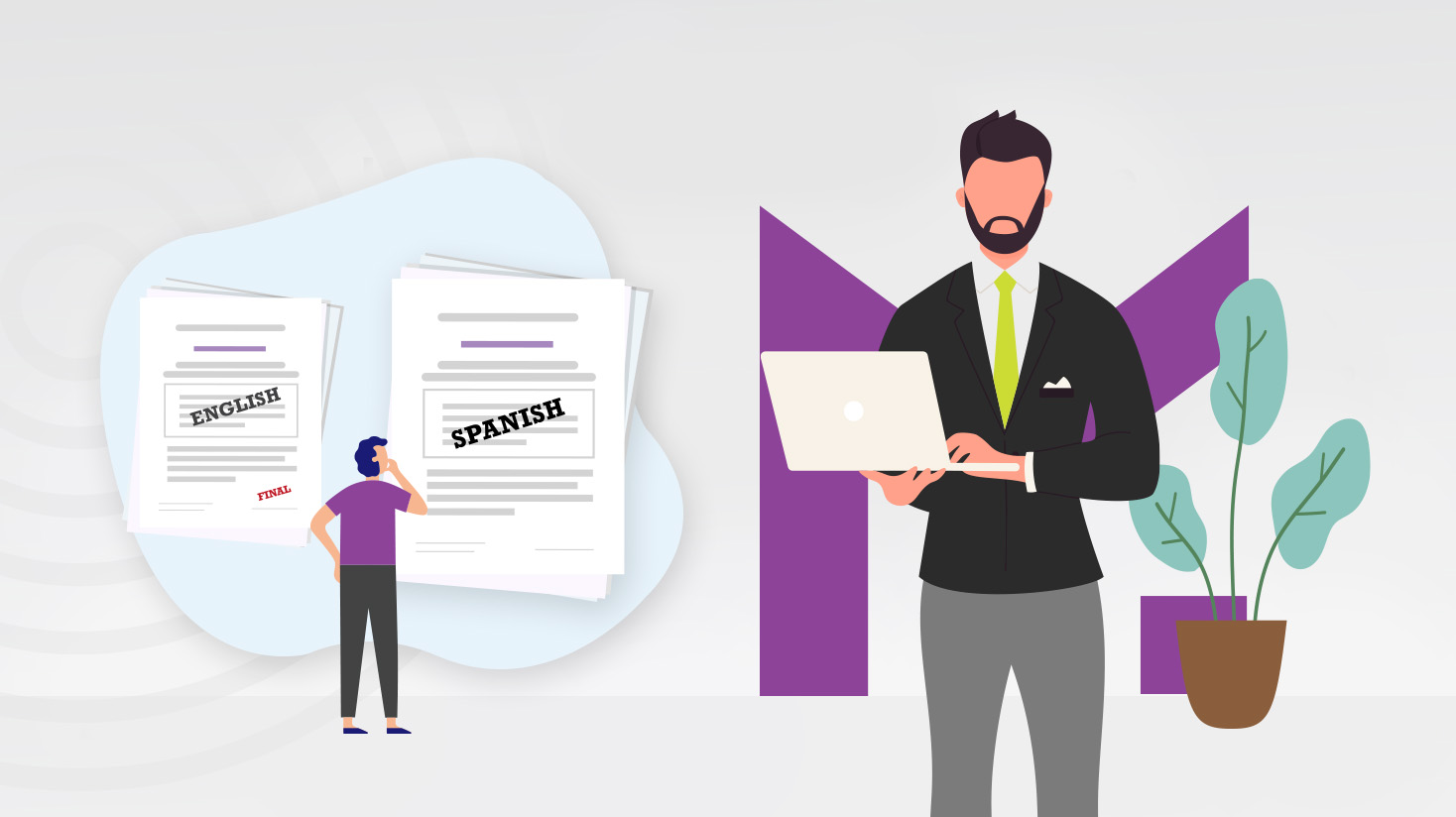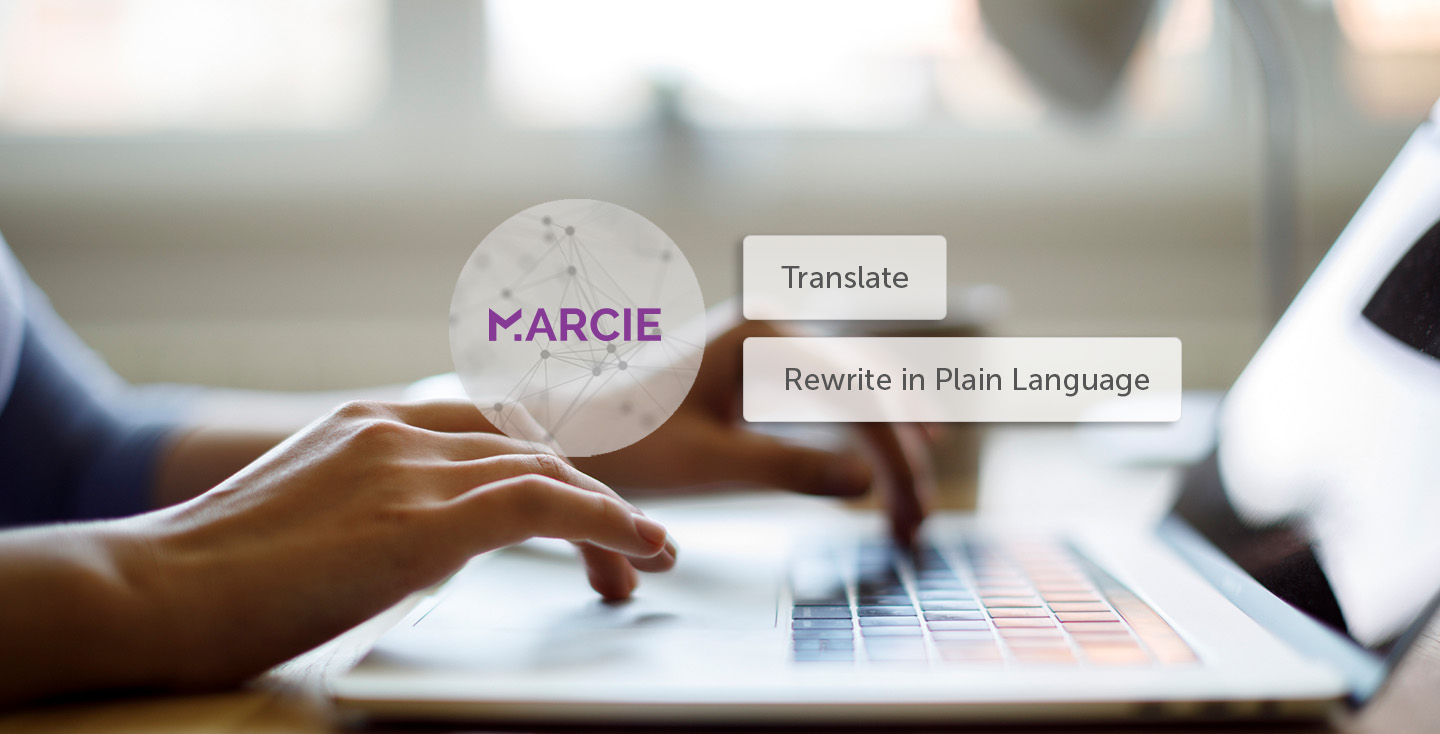
In the United States, 67.8 million people speak a language other than English at home, and over 25 million are considered to have Limited English Proficiency (LEP). Limited English Proficiency is defined as individuals who do not speak English as their primary language and who have a limited ability to read, speak, write, or understand English. Given that 76% of consumers prefer to buy products from businesses that serve them in their language of choice, and 40% won’t even consider buying from those that don’t, it’s clear that catering to language preferences is good for business.
However, in regulated industries like financial services and healthcare, its importance is elevated. Research from the CFPB has found that “information in consumers’ first language is critical to improved financial well-being”. It helps customers understand the rights and protections to which they are entitled, boosts their confidence when making critical financial and healthcare decisions, and reduces miscommunication that can lead to poor outcomes.
Regulated organizations produce a wide array of written communications, including welcome kits, servicing correspondence, and disclosures both in print and online to support the entire customer journey. When offering a variety of products or services and operating across multiple states, the volume of communications under management begins to grow exponentially.
This results in an immense amount of content that would require translation to cater to LEP and first-language preferences. However, the systems for managing these communications and the translation process that most use make this an especially expensive, time-consuming, and complex task. Consequently, many companies limit their translation efforts to regulatory requirements, overlooking the opportunity to proactively meet the diverse language needs of their entire customer base.
Most businesses recognize the advantages of offering their communications in multiple languages, however, the translation and maintenance of materials is complex, time-consuming, and costly. To understand how to fix it, we must first understand its issues:
In January 1954, a live demonstration of the IBM701 computer shocked a group of government officials, linguists, and journalists when it translated 60 sentences from Russian to English in real time. The IBM press release published the next day described the event this way: “A girl who didn’t understand a word of the language of the Soviets punched out the Russian messages on IBM cards. The “brain” dashed off its English translations on an automatic printer at the breakneck speed of two and a half lines per second.”
Since then, continuous research and technological advancement have resulted in incredibly sophisticated AI-powered platforms such as DeepL, Google Translate, and ChatGPT. In certain contexts, these AI tools can produce translations that rival those of human translators. However, it’s understandable that organizations, especially in regulated industries, might be hesitant to fully automate translation without experience with the solutions.
That said, AI-based translation offers an opportunity to drive efficiency and speed in the translation process, even when acting as a supporting tool vs. a replacement for human-led translation. Organizations leverage a human-in-the-loop process to give them control over the final product. This approach ensures efficiency, speed, while enabling human counterparts to validate that translations are accurate.
To harness the benefits of efficiency with AI translation, the tools should be seamlessly integrated with content management workflows. In the case of customer communications, that means having AI available from within your Customer Communications Management (CCM) platform. This offers several distinct advantages over using translation tools in isolation:
Better results with generative AI: Customized prompts, designed by AI experts specifically for regulated customer communications, consistently produce high-quality translations without altering the content’s original meaning.
Increased efficiency: Removing content from your CCM platform to put into a translation tool, and then moving it back into the CCM system, is time-consuming and risks human error. An integrated approach means you can manage the entire authoring, translation, and approval process using a single solution.
Enhanced safety and security: CCM platforms are built for the enterprise and give you total control over who on your team can use AI-powered translation functions.
Choice of AI-based translation tool. The most effective solutions enable you to choose from multiple translation engines. Different models are tailored for specific purposes, for instance, some may be more accurate in certain languages, while others might support languages not available elsewhere.
Preservation of formatting and variable data. It’s important to select platforms that maintain complex variable content and formatting after translation. AI-based translation services won’t automatically preserve these elements, so it’s vital that your CCM platform maintains these elements during the translation process so that your team doesn’t have to manually add them back each time.
Protections against your content being used to train third-party models. Ensure your CCM solution has safeguards in place to protect sensitive content and prevent proprietary information from being used as training data by third-party platforms.
Protections to ensure customer data doesn’t leave your system. Look for solutions that offer a content management layer to ensure customer data is never leaked into third-party systems.
CCM platforms which enable modular content management are particularly beneficial. This approach enables single-instance translation of recurring content objects. Using a modular approach, these content objects share a single point of change, so there’s no need to translate them separately in each communication they appear in. This not only eliminates the redundant work of repeatedly translating the same content but also ensures consistency in your final product. Plus, it means you don’t have to wait for the completed English versions of communications to begin translation as each content object can be authored, translated, and approved on their own.
Some CCM platforms offer pre-built templates to lighten your translation workload. In healthcare, for example, this could include templates for the Annual Notice of Coverage, Evidence of Coverage, and Summary of Benefits documents, which must be translated into multiple languages as mandated by the Centers for Medicare and Medicaid Services (CMS). Having this pre-built starting point to work with can reduce the overall translation burden by upwards of 60%.
Integrated quality assurance, review, and approvals capabilities. Look for solutions with the flexibility to keep humans in the loop to validate AI-based translations should you choose to. Choose CCMs that facilitate easy collaboration with the content authors and SMEs in your organization, as well as external third parties. These platforms should make it straightforward for these contributors to understand which content requires their attention, and what type of input is needed from them, make it easy for them to make the changes, and manage the deadlines for their contributions. This helps ensure that projects remain on schedule and that the quality and compliance of your translated communications are maintained at a high standard.
Translation requirements are often dictated by the demographics in a company’s service area. In the healthcare sector, for instance, CMS requires translations when a language group exceeds 5% of the population. There’s been a significant uptick in Americans with Limited English Proficiency (LEP), from 5.5% in 1990 to 7.6% in 2022, alongside a surge in speakers of languages such as Mandarin, Vietnamese, Korean, Hindi, and Tagalog. These demographic shifts have led businesses to need to increase the frequency and diversity of languages in their translations, a trend likely to persist given that immigration levels are at all-time highs in the United States.
Furthermore, the increasing demand for personalized offerings in regulated sectors is pushing organizations to expand their portfolios. Each new product or service launch brings with it an additional set of customer communications that require translation. This, coupled with the continued proliferation of digital channels and the need to support similar content in multiple places, makes having a fast, effective, and efficient translation process key to scalability and maintaining a competitive edge.
This situation presents an opportunity for proactive organizations. Now is the time to act, given the advancements in AI. Integrating advanced translation technologies with Customer Communications Management (CCM) platforms is key. Choosing the right vendor with robust, AI-enhanced translation capabilities can streamline the process, ensuring accuracy, compliance, and relevance across various languages and cultures.

Every AEP prep season, Medicare Advantage Organizations struggle to get both English and Spanish versions of the ANOCs,…
Read the article
November 13, 2023 – Messagepoint announced today enhancements to its generative AI capabilities to further support organizations in…
Read the Article
The emergence of OpenAI’s ChatGPT and GPT-4, Google’s Bard, and other generative AI tools have dominated headlines in…
Read the article